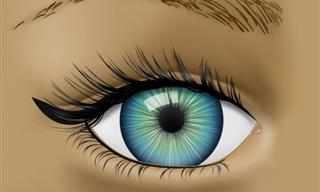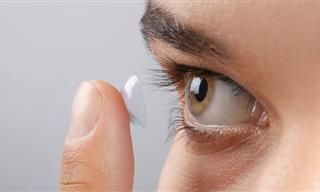Most of us are aware of the dangerous effects ultraviolet (UV) rays have on our skin, but not many realize the danger imposed on our eyes. However, while it may seem obvious to put on sun block, how should we care for our eyes? Be it from natural sunlight or artificial UV rays, UV radiation can cause significant damage to the eye's surface tissues as well as the cornea and lens. The rays may also burn the front surface of the eye, much like a sunburn on the skin.

What is UV radiation?
UV radiation consists of invisible rays from the sun. There are three types of UV radiation: UVA, UVB, and UVC. While UVC rays do not pose any threat (these rays are absorbed by the ozone layer) exposure to UVA and UVB can have adverse effects on your eyes and vision.
Significant damage can be caused when exposed to these dangerous rays, both short- and long-term. It is also important to note that UV radiation can also be given off by artificial sources, like welding machines, tanning beds and lasers.
What are the short-term effects?
If exposed to UV rays while unprotected, you are likely to experience an effect called photokeratitis - an inflammation of the cornea caused by brief exposure to UV radiation. This usually occurs when combined with cold wind and snow. It is similar to a 'sunburn of the eye' and may be painful. Symptoms may include red eyes, a foreign body sensation or a gritty feeling in the eyes. You may also feel extreme sensitivity to light and experience excessive tearing. This is usually temporary and rarely causes permanent damage to the eyes.

What are the long-term effects?
Long term exposure to UV rays can be more serious. Scientific studies and research have shown that exposure to small amounts of UV radiation over a period of years may increase the chance of developing a cataract which may damage the retina - the lining of the eye that is used for seeing. This damage is not reversible and may contribute to chronic eye diseases as well as increase the risk of developing skin cancer around the eyelids. Long-term exposure may also increase the risk of developing pterygium - a growth that invades the corner of the eyes and the pinguecula - a yellowish, slightly raised lesion that forms on the surface tissue of the white part of your eye.
Protecting your eyes
It is important to wear quality sunglasses that offer good protection and a wide-brimmed hat when outdoors. Your sunglasses should block 99% of both UVA and UVB rays and screen out 75% to 90% of visible light. Sunglasses should also be free of distortion and imperfection and have lenses that are gray for the proper color recognition. Teenagers and children should also wear sunglasses when outdoors. Kids especially are at a greater risk for developing serious vision damage later in life without regular UV eye protection.
 Go to BabaMail
Go to BabaMail


























